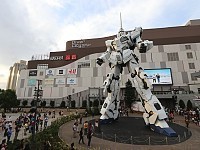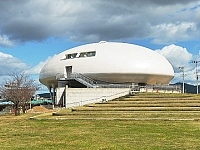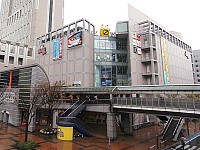Manga and Anime
What are manga and anime?
Modern-day manga (漫画) can be defined as comics corresponding to a Japanese style that originated during the mid-1900s. The popularity of manga in Japan has since ballooned. Today, there is a huge domestic industry for the manga, and increasingly so internationally. In Japan, people of both genders and all ages read the manga. For example, it is quite common to see businessmen in suits reading thick comic books on commuter trains.
The range of manga genres is diverse, with content ranging from history to futuristic science fiction and from teenage romance to profound themes about life. The comics are broadly separated into four categories according to the target audience: boys, girls, youths, and matured. They can be commonly found in bookstores, bookstands, and convenience stores all over Japan.
A manga series may become popular enough that it is made into an anime (アニメ) – Japanese-styled animation. Examples of world-famous anime include “Dragonball”, “Sailor Moon”, “Pokemon” and “One Piece”. Of course, original scripts may also be written for anime. One popular anime production company with its own distinct style is Studio Ghibli, which has produced award-winning works such as “My Neighbor Totoro” and “Spirited Away”.

Some view this approximately 1000-year-old work, displayed at Kozanji, Kyoto, to be Japan’s first manga
Manga and anime-related events and places of interest
The popularity of manga and anime in Japan has led to the establishment of many related attractions and places of interest. In Tokyo, some of the world’s largest comic events are held annually.
Manga Cafes (Manga Kissa)
Manga cafes are places where customers can read from a library of manga for a specified time at a corresponding fee. Guests are free to borrow and return books as many times as they wish within the time limit. Many manga cafes also allocate individual compartments, offering guests some privacy for their reading pleasure.
Manga cafes can be found at almost all major city centers, usually located close to the train stations. Big cities such as Tokyo and Osaka have a large number of such establishments. Many of them offer a free flow of non-alcoholic drinks and double as internet cafes. Charges are typically about 300 yen per 30 minutes, but most offer packages such as three hours for around 1000 yen.

Inside a manga cafe
Maid Cafes
Maid cafes were originally created to fulfill the fantasies of fans of maid-themed manga and anime. The concept originated in Akihabara at the dawn of the millennium. Ever since, multiple maid cafes have been opened in the area, making Akihabara by far the best place to go for a maid cafe experience. The success of the cafes has inspired emulations at other locations in Japan and other countries such as Taiwan, South Korea, China, Canada, and the United States.
The primary characteristic of maid cafes is the waitresses who are dressed typically in costumes as French maids. Food and desserts served at the cafes are usually decorated in a cute way. The waitresses role-playing as maids may engage in friendly conversations or play card/video games with the customers to make them feel at home. Picture-taking is usually forbidden, but some cafes allow customers to have their pictures taken with a “maid” for an additional fee.

Maid cafe at Akihabara
Events
A few manga and anime grand events are held in the course of a year. In particular, the AnimeJapan (formerly known as Tokyo Anime Fair), held annually at Odaiba’s Big Sight convention center, is one of the largest animation-related events in the world. Another noteworthy event is Comiket, a huge comic book fair that attracts hundreds of thousands of people. It is held biannually, also at Big Sight in Tokyo.

AnimeJapan
Shopping
Manga and anime-related items have a huge following in Japan and have given rise to the setting up of many hobby shops, especially at places like Denden Town of Osaka and, more prominently, in Tokyo’s Akihabara district, the mecca of manga and anime. Below is a list of some locations where manga and anime related shopping can be done:
 Tokyo
Tokyo
Akihabara
Akihabara is the center of gaming, manga, and anime culture in Japan. With its electronics shops, maid cafes, and anime stores, it is a paradise for any self-proclaimed otaku. Stores are typically open from 10:00 to 20:00, although individual store hours vary.
 Tokyo
Tokyo
Nakano Broadway
Nakano Broadway is a shopping mall with a large concentration of stores specializing in anime goods, including numerous specialized branches of the Mandarake store. Items on offer include a wide selection of figures, toys, and costumes. Stores are typically open from 12:00 to 20:00, although individual store hours vary.
 Nationwide
Nationwide
Pokemon Center
Found in major cities, including Sapporo, Sendai, Tokyo, Yokohama, Nagoya, Osaka, Hiroshima, and Fukuoka, Pokemon Centers are stores where you can buy all things Pokemon like trading cards, stationery, toys, and games, including some exclusive items.
 Tokyo
Tokyo
DiverCity Tokyo Plaza
This shopping, dining, and entertainment complex opened in 2012 in Odaiba and features attractions related to the Gundam anime series, including a large, “life-size” Gundam statue in front of the building and Gundam Base Tokyo, a shop dedicated to plastic models.
Theme parks and museums
Manga and anime have also inspired the establishment of several theme parks and museums. Some such popular attractions are:
 Tokyo
Tokyo
Ghibli Museum
For hours and fees, see the museum page
Located near Mitake Station, a little bit outside central Tokyo, the Ghibli Museum is home to the favorite characters from Ghibli Studios films such as My Neighbor Totoro, Princess Mononoke, and Spirited Away. The museum features special animation exhibits and exclusive short films. Advance reservations are required to visit the museum.
 Kawasaki
Kawasaki
Fujiko F. Fujio Museum
For hours and fees, see the museum page
The Fujiko F. Fujio Museum, informally known as the Doraemon Museum, shows the work of manga artist Fujiko F. Fujio, creator of the influential and long-running Doraemon series. The museum is located in Kawasaki next to Tokyo and requires advanced reservations.
 Ishinomaki
Ishinomaki
Ishinomori Manga Museum
For hours and fees, see the museum page
This museum is dedicated to the manga creator Ishinomori Shotaro, a prolific artist who drew several dozen influential manga series including Cyborg 009 and Kamen Rider and displays a collection of comics, statues, and artworks from his numerous manga series. The museum is located in Ishinomaki near Sendai. It was damaged by the 2011 tsunami but has since been repaired and reopened.
 Takarazuka (near Osaka)
Takarazuka (near Osaka)
Osamu Tezuka Manga Museum
Hours: 9:30 to 17:00 (entry until 16:30)
Closed: Wednesdays (except holidays), December 29-31
Admission: 700 yen
Known as the “God of Manga” for his pioneering efforts in the industry, Tezuka Osamu is well known for “Astro Boy” and much other manga series. After his death, a memorial museum was built in Takarazuka, the city where he grew up, a 30-minute train ride north of Osaka. The museum documents the artist’s life and exhibits a wide array of his work in both permanent and temporary exhibition spaces.
 Kyoto
Kyoto
Kyoto International Manga Museum
For hours and fees, see the museum page
The Kyoto International Manga Museum is centrally located near Karasuma-Oike Subway Station and displays a massive collection of manga available for browsing. It also focuses on both the adoption and development of manga internationally.
 Kitakyushu
Kitakyushu
Kitakyushu Manga Museum
For hours and fees, see the museum page
The Kitakyushu Manga Museum introduces the history of manga with a focus on artists who have affiliations to Kitakyushu City, including Matsumoto Leiji, the creator of Space Battleship Yamato and Galaxy Express 999. The museum is located in Aru-Aru City, a shopping center that also features several manga and anime-related shops.
